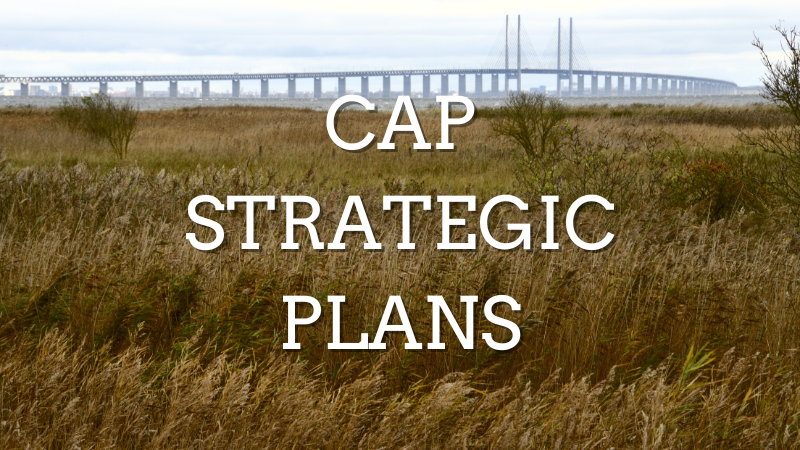
The struggle to cap and redistribute direct payments received by the largest landowners, to support smaller farms, thereby enabling a more divers and resilient rurality, has come up against the whole financial system in Denmark. So how did Denmark end up without capping or redistributive payments? And how could the Commission accept such a proposal?
Ph.D Rasmus Blædel Larsen
Introduction
The protracted process of finishing the current CAP-reform, completed 3 years after the previous CAP-period expired, has proven to be every bit as vulnerable to national inertia as feared. Take Denmark as an example. Whether it was a deliberate strategy to finalise the CAP Strategic Plan (CSP) so late that the Commission would lose yet another deadline if they chose to follow up on the issues unresolved is hard to know. What is clear is that quite a number of issues articulated by the Commission in its observation letter to Denmark as well as those raised by DG Envi/Clima were disregarded, when the Danish CSP was approved in August 2022.
The lack of ambition toward meeting the greener objectives in the Farm to Fork strategy is not surprising in a Danish context and is obvious in the lack of congruence between the spirit and guidelines of the CAP itself and the Danish CSP. In the following we will however focus on the fate of the obligatory redistribution-measures of the new CAP, aiming to support smaller farmers and by extension rural communities.
The Danish context
Perhaps a crash-course in Danish farm-realities would be helpful. The small country of 5,8 mil. inhabitants, just 40.000 km2 and only 8000 full-time farmers, is home to 3 global players in the food-industry: Arla (dairy), Danish Crown (pork) & Danish Agro (grain & grass). Denmark exports 80% of its production and has traditionally belonged to a ‘Gang of Four’. This is Euro-shorthandfor specific member states – Denmark, UK, Holland and Sweden – with a highly technologically developed farming-sector, based on the high input – high output business-model. These four have long been staunch advocates of abandoning the CAP-subsidies. The reasoning behind this anti CAP positionality is that Denmark is at the forefront of efficiency and productivity and would therefore out-compete others if the market was liberalised.
That tune changed under the financial crises in 2008-2009, which showed just how debt-ridden the Danish farmers were/are. Approximately 80% of the pig farmers were insolvent in the years following the financial crises and many Danish farmers were forced, by their banks, to sell their acquisitions in Eastern Europe, just to pay the interests on their loans.
Evidence of the graveness of the situation became apparent in 2010 when the Economic Council of Denmark wrote a special report on the situation (p.61), stating that it would be better to abandon farming altogether . This held for both the individual farm-level as well as on a societal level, where it would be economically advisable to invest the resources in other sectors. The total amount of debt that the Danish farmers owe is 600 bil. Kroner and the Danish financial system is therefore an influential stakeholder in all agricultural legislation and regulation[1]. An indication of just how sensitive the situation is in Denmark can be deducted from the fact that the large farmer’s lobby-organisation Landbrug&Fødevarers (L&F) member list is secret. Researchers however have disclosed that all major Danish banks, as well as many other financial service-providers are indeed members[2].
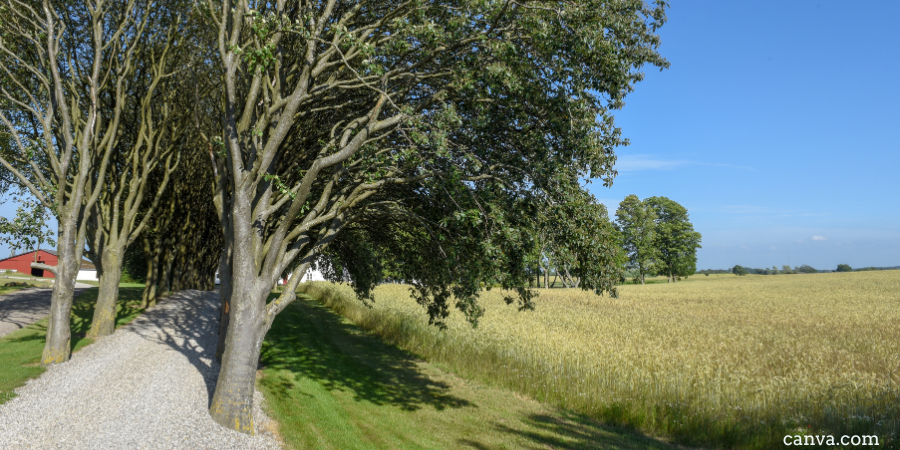
Since 2010 the situation has somewhat stabilised, although the number of farmers continues to decrease (latest progonoses is 5000 by 2030) and thus the size of the remaining farms are increasing. Denmark has the highest average farm-size in the EU. An average full-time farm is +200 ha. and the national average when all farmland is included is 70 ha. The average price of a farm in Denmark is in the vicinity of 10 mil. euros – among the highest in the union.
This situation is making it not only impossible for young farmers to acquire a farm, but even well-consolidated farmers looking to expand will find it difficult to raise the capital needed. The short-sighted solution to this problem has been to liberalise the land-market. Since 2015 Denmark has the most liberal (e.g. no regulations or land-register) land market in the EU, as a report written for the commission in 2021 showed.
This rather undemocratic and non-transparent state of play was implemented in order to attract venture capital (pension funds, hedge-funds and other large capital-holders) so that the technological edge can be maintained, and the long overdue generational shift can be made without the banks losing their investments. There are of course many other aspects to the Danish farm-structure, but to assess the struggle to redistribute CAP-subsidies from the largest farms to the smaller ones, these are the key factors.
Strong lobby influence and lack of transparency
It should be noted that all previous attempts within the CAP-context to create assistance to small-holders and promote rural resilience have met a similar fate in Denmark. The lobby-organisation for the big industrial farmers (L&F) has succeeded in inventing creative arguments and projects in order to channel available funds in pillar 2 back into pillar 1 and the largest farms. This way most of the available funds allocated outside pillar 1 have been funding research-projects into efficiency in feeding, handling manure and greenhouse gasses – and even research aimed at undermining the science behind the nitrogen-regulation. Nitrogen-leaks from the nigh 32 million pigs and cows, that come through the Danish production-facilities annually is one of the most contested environmental issues in Denmark.
And so, it was with some anxiety that the Danish farmers – small and large – witnessed the new obligatory redistribution within the CAP; and the fact that the actual implementation was left up to the Danish administration to design in the CSP.
The first suggestion for a CSP from the Danish authorities was send out in the fall of 2021. The public hearing-phase, during which all stakeholders had the opportunity to suggest alterations, lasted a couple of months.
What followed after the hearing-phase had been concluded is only known indirectly through the final outcome of the CSP. Subsequently the ‘improved’ CSP – a 462 page, highly technical text – was sent to Brussels without being made public to the Danish stakeholders – who could not know to what extent the initial plan had been changed. The small-scale farmers Frie Bønder Levende Land (FBLL) have since accused the national administration of incorporating wholesale the alterations suggested by L&F in their 80-page response to the initial plan. It therefore came as a real shock when the final and approved plan was made public on the last day of August, just 4 months before its implementation.
The result: no Capping or Redistribution. The Danish authorities, helped by the 80-page lobby-produced report, succeeded in obtaining approval of a central – if contentious – argument: the large farms need the money more than the smaller ones; thus, it would be unfair to redistribute the CAP in Denmark – and anyway Denmark does not need to redistribute.
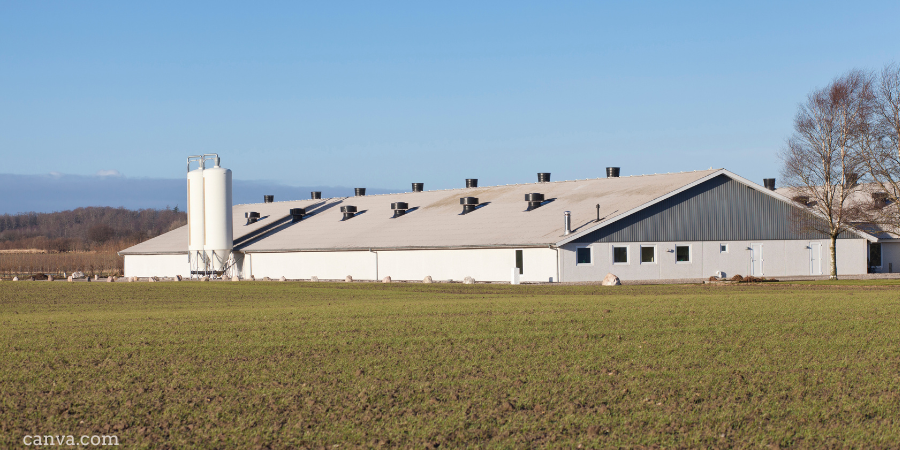
Is redistribution unfair to Danish farmers?
The Danish CSP begins by readjusting the priorities of the Farm to Fork strategy – as is often the case within a Danish agri-context – highlighting how the main goal of the CAP is to promote and support “an intelligent, competitive and robust and resilient farming-sector in order to guarantee food security in a long-time perspective”. Then environmental issues are mentioned as a priority and only then the CSP tackles the issue of “strengthening the socio-economic structure in the rural areas” (p. 22) – which on the next page is exemplified by initiatives to construct bio-refineries (to get rid of the manure).
On page 36-38 the strength, weakness and potentials of the Danish farming-sector are outlined. Curiously for an official document of this nature, the public servants write: “In spite of the fundamental positions of strength (…) the international competition is sharp and weaknesses in the Danish farm production are exposed.” Then the international meat-markets, the inability to make the generational shift, the negative impact of environmental/climate related measures on being competitive are listed as examples of said vulnerability. Another weakness mentioned is that “the sector’s investments are decreasing – which is related to the high levels of debt. Finally, it is a fundamental weakness, that the Danish Farming sector is dependent on external subsidies from – among others – the EU.” (p.36)
The reason for including these quotes are that some 100 pages further into the CSP they are being used – or misused – to argue that redistribution is unfair.
On pages 113-14, under the heading 3,4: Concerning the objective of a more just distribution and a more efficient targeting of the income-subsidies, the Danish CSP produces some astounding and largely undocumented claims. The language is convoluted, but the gist of the argument is as follows: Small farm-holders are old and receive pension from the state. Small farm-holders are married to someone who contributes to the household-economy. Small farm-holders only use 35 hours/year of external manpower and thus do not contribute to the creation of jobs in rural areas. And finally the overall economic situation shows that large farms are debt-ridden and smaller farm-holders generally are much better off. The numbers quoted in the text are that large farms have on average a 26% solvency while small farmers have an average of 46%. (p.113-14)
The Danish authorities therefore conclude that it would be unfair towards the large farms to fulfil the obligatory redistribution contained in the new CAP. If this, however, should pose a problem in getting the CSP approved, the Danish authorities put forward the argument that implementation of the various measures to simplify the direct payments will shortly have redistributed a substantial amount from the larger to the smaller farms anyway.
Here is an example of how they go about documenting these claims.
Under the subheading: A more just distribution of the money, the CSP reads: “The analysis of the Danish authorities shows that the abandonment of payment rights will lead to a redistribution of the subsidies from the fulltime to the part-time farmers amounting to 47 mil. kr. (approx. 7 mil. euro). The abandonment of the payment-rights means that a total amount of 2 billion kr. (approx. 300 mil. euro) will be redistributed. This will cause a more just distribution of the support, as all farms will receive equal payment per hectare.” (p.114)
Then follows a section calculating the part of the salary paid to farm helpers which is constituted by CAP-funding – on various sizes of farms. It is truly difficult to understand the math behind and the many numbers involved, but it boils down to this analysis: the larger the farm, the smaller the proportion of the salaries comes from the EU-coffer.
The point is: “The numbers show that smaller farms already have a great advantage, when it comes to the work-input in relation to the received subsidy through direct payments. Redistribution would make this inequality even greater, which would not be sensible taking the the economic viability of the smaller farms into consideration.” (p.114)
Finally to justify the derogation from implementing redistribution the CSP includes a footnote in the text referencing article 29, § 1 and article 98 of the CSP regulation. The Danish interpretation of the articles states that despite the obligatory redistribution, member states have the authority to use ‘other instruments and interventions’ if they can show that ‘such a need’ is being fulfilled adequately.
The last sentences in this section brings us back to the beginning.
“Furthermore, it is not desirable that the support for the larger farms should decrease as a consequence of redistribution, as it will be likely to erode the competitiveness of the farming sector in Denmark. Larger and mid-sized farms are more dependent on the subsidies in the coming period, when the payment rights disappear. In addition, the solvency (of the larger farms) shows that they are more vulnerable as regards changes in income than part-time farms.” (p.115)
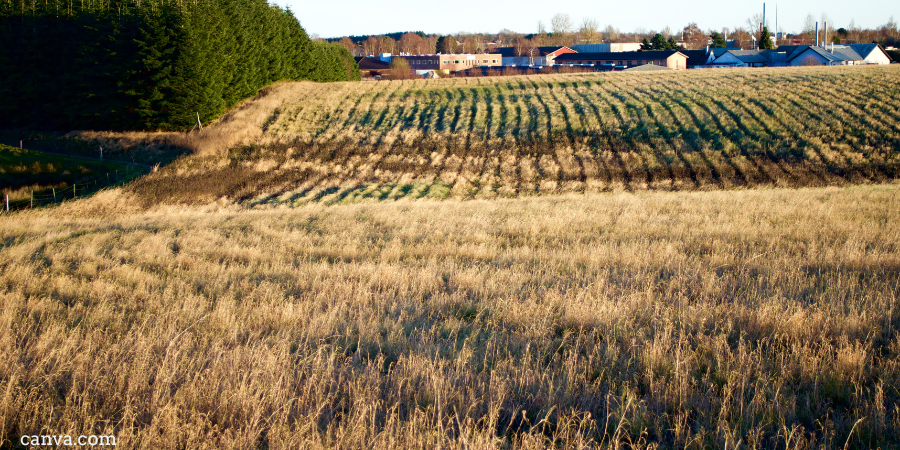
Questioning the CSP’s arguments
There are many murky issues in here.
- To begin with, there is no clear alignment between small farms and part-time farms in Denmark.
- According to the logic of the Danish CSP, small farms are more viable than large ones. Shouldn’t that encourage supporting the existence of these farms?
- The actual redistribution when the payment rights are phased out will predominantly benefit the largest farmers as the amount of hectares determine the amount of money you receive.
- The amount of work-input on smaller farms are as quoted above only 35 hours/year. To make the argument that the marginally higher salary-support received by smaller farms constitutes redistribution seems a bit far-fetched.
- A fair amount of the claims and calculations in the CSP are unreferenced.
It takes great effort and a lot time to read the Danish CSP – let alone trying to look up the documentation presented and check the validity of the claims. Whether the DG-Agri auditors have done this is unclear, but the small-scale farmers (FBLL) did.
They wrote a letter of complaint to the Polish Agri-Commissioner in April 2023 and later the Family Farmers organisation (a part of the big lobby-organisation L&F since 2007) followed suit.
In FBLL’s letter they address some of the issues just mentioned as well as some more technical, here is a short extract:
– an analysis purportedly showing that a “preponderance” of farms smaller than the Danish average (68.8 hectares) will apply for eco-scheme support and coupled payment slaughter premiums. These measures are “expected” to provide “approximately” 6% more support to smaller than larger farms. How slaughter premiums benefit small farms that do not produce animals for slaughter is unclear. Moreover, the Danish Strategic CAP Plan does not provide the analysis itself, and the analysis is not referenced. The reader therefore cannot know who performed it, and the reader cannot check any calculations that might have been made.
– the cessation of direct payment entitlements in January 2023 will, according to the plan, primarily be at the expense of producers of cattle and starch potatoes, but it will also transfer money from large to small farms. How the latter is supposed to happen is not explained or documented.
We believe that these justifications for derogation fail to “duly demonstrate that the redistributive needs are relevantly addressed through other interventions / instruments of pillar I.”
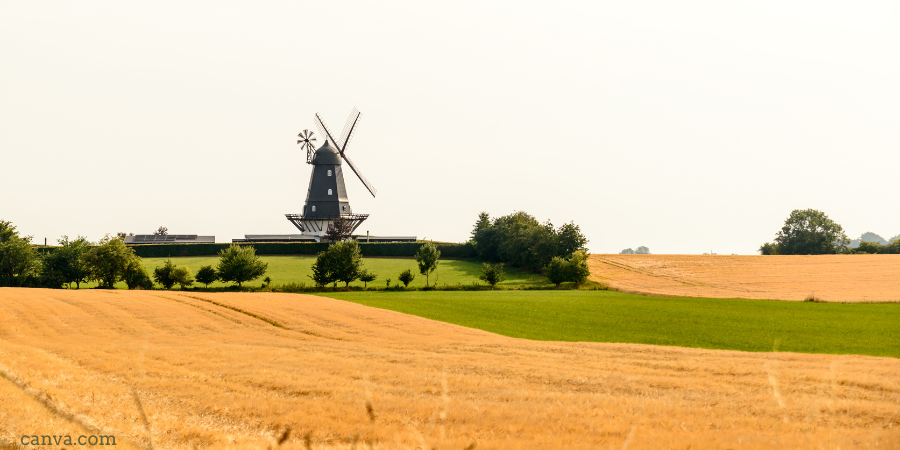
Conclusion
Brussel’s response to the letter from FBLL was friendly and non-committal. There is possibly more leverage behind the Family Farmers complaint, but it remains to be seen.
Why did the Danish CSP get the approval of the Commission in the first place, given the nature of the arguments and the lack of documentation? It seems plausible that if the choice was between more delay in the actual implementation by bending the Danish CSP to the letter of the CAP or simply letting the Danes get their way, the latter was the more desirable. The process had already taken much longer than anticipated and meanwhile the Union faces other more immediate challenges. But it is demoralising to the smaller farmers across Europe, especially, as in the Danish case, if they make the effort of engaging in the process and communicating the contentious issues to Brussels, only to be dismissed.
And it puts a question mark right at the heart of the current CAP. If the Commission rubberstamps the CSP’s, all member states are free to let the national concerns determine how they see fit to implement the Farm to Fork strategy – and the danger looms, that it will be business as usual and no real reform.
[1] https://research.ku.dk/search/result/?pure=en/publications/vilkaar-virkeligheder–vanskeligheder-i-dansk-landbrug(77bffd55-53c9-4531-ac65-b3e7cfc3d510).html
[2] http://www.organictoday.dk/landbrugstop-optraeder-under-falsk-varebetegnelse/
Download this article as a PDF
 This article is produced in cooperation with the
This article is produced in cooperation with the
Heinrich Böll Stiftung European Union.
More on CAP Strategic Plans
CAP post-2027: An Integrated Rural and Agricultural Policy – Part 2
CAP post-2027: An Integrated Rural and Agricultural Policy – Part 1
Can the CAP Strategic Plans Help in Reaching our Pesticide Reduction Goals?
Wallonia’s Observation Letter: A plan that fails to address climate and biodiversity crises
CAP Strategic Plans and Food Security: Fallow Lands, Feeds, and Transitioning the Livestock Industry
A Just and Green CAP and Trade Policy in and Beyond the EU – Part 2
A Just and Green CAP and Trade Policy in and Beyond the EU: Part 1
Bulgaria’s CAP Strategic Plan: Backsliding on Nature and Biodiversity
Changes “required” to Ireland’s CAP Strategic Plan – European Commission
French CAP Plan: What Opportunities for Change During the New 2022-27 Presidential Term?
CAP, Fairness and the Merits of a Unique Beneficiary Code – Matteo Metta on Ireland’s Draft Plan
ARC Launches New Report on CAP as Member States Submit Strategic Plans
Slashing Space for Nature? Ireland Backsliding on CAP basics
Quality Schemes – Who Benefits? Central America, Coffee and the EU
Civil Society Organisations Demand Open and Ambitious Approval of CAP Plans
CAP Strategic Plans: Germany Taking Steps in the Right Direction?
CAP Strategic Plans: Support to High-Nature-Value Farming in Bulgaria
Commission’s Recommendations to CAP Strategic Plans: Glitters or Gold?
German Environment Ministry Proposals For CAP Green Architecture
CAP Performance Monitoring and Evaluation Framework – EP Position
A Rural Proofed CAP post 2020? – Analysis of the European Parliament’s Position
CAP Beyond the EU: The Case of Honduran Banana Supply Chains
CAP | Parliament’s Political Groups Make Moves as Committee System Breaks Down
CAP & the Global South: National Strategic Plans – a Step Backwards?
CAP Strategic Plans on Climate, Environment – Ever Decreasing Circles
European Green Deal | Revving Up For CAP Reform, Or More Hot Air?
Climate and environmentally ambitious CAP Strategic Plans: Based on what exactly?
How Transparent and Inclusive is the Design Process of the National CAP Strategic Plans?



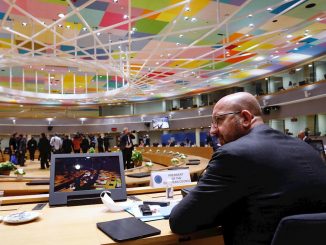


1 Trackback / Pingback
Comments are closed.